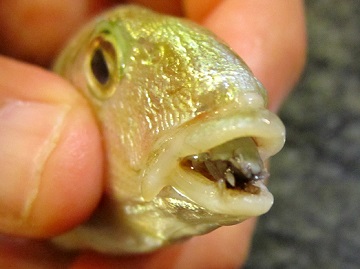341114-tongue snatcher.JPG

This isopod has replaced the fish's tongue. Credit: Marco Vinci, Attribution-ShareAlike 3.0 Unported
Here’s a tasty little story that’s likely to set your tongue a-waggin’. In fact, it’ll probably make you grateful that you have a tongue to wag at all. It’s the tale of a marine critter no bigger than the tip of your little finger that invades the mouth of a fish and eats its tongue. It then becomes a replacement for the tongue.
The creature has the tongue-twisting name of Cymothoa exigua. It’s an isopod — a type of crustacean. It’s found in the Gulf of California and other waters along the eastern Pacific.
Juveniles enter the body of a host — usually a snapper — through the gills. They start as males, but one of them transforms into a female. She uses seven powerful pairs of legs to latch onto the back of the host’s tongue. And it’s a death grip. The invader uses its jaws to slice open the fish’s tongue and draw out its blood, from front to back. The tongue then withers and dies.
Without a tongue, though, the fish would die, too, which is bad for the invader. Since Cymothoa is still attached to the stub of the withered tongue, the fish uses it as a replacement. In essence, it becomes the fish’s tongue — the only known instance of a parasite taking over the role of a host’s organ.
The invader mates inside the fish — perhaps while it’s on the tongue. When the young are born, they stay with the mother for a while, then leave to find their own hosts. That continues a cycle that may be natural, but it’s also — wait, the word’s on the tip of my tongue — oh, yeah: gross.

